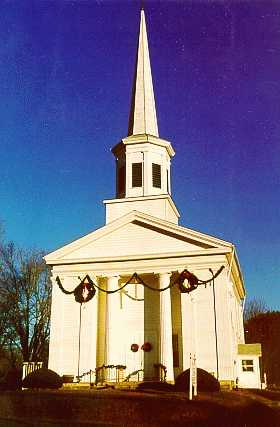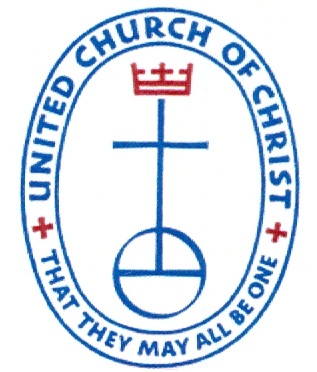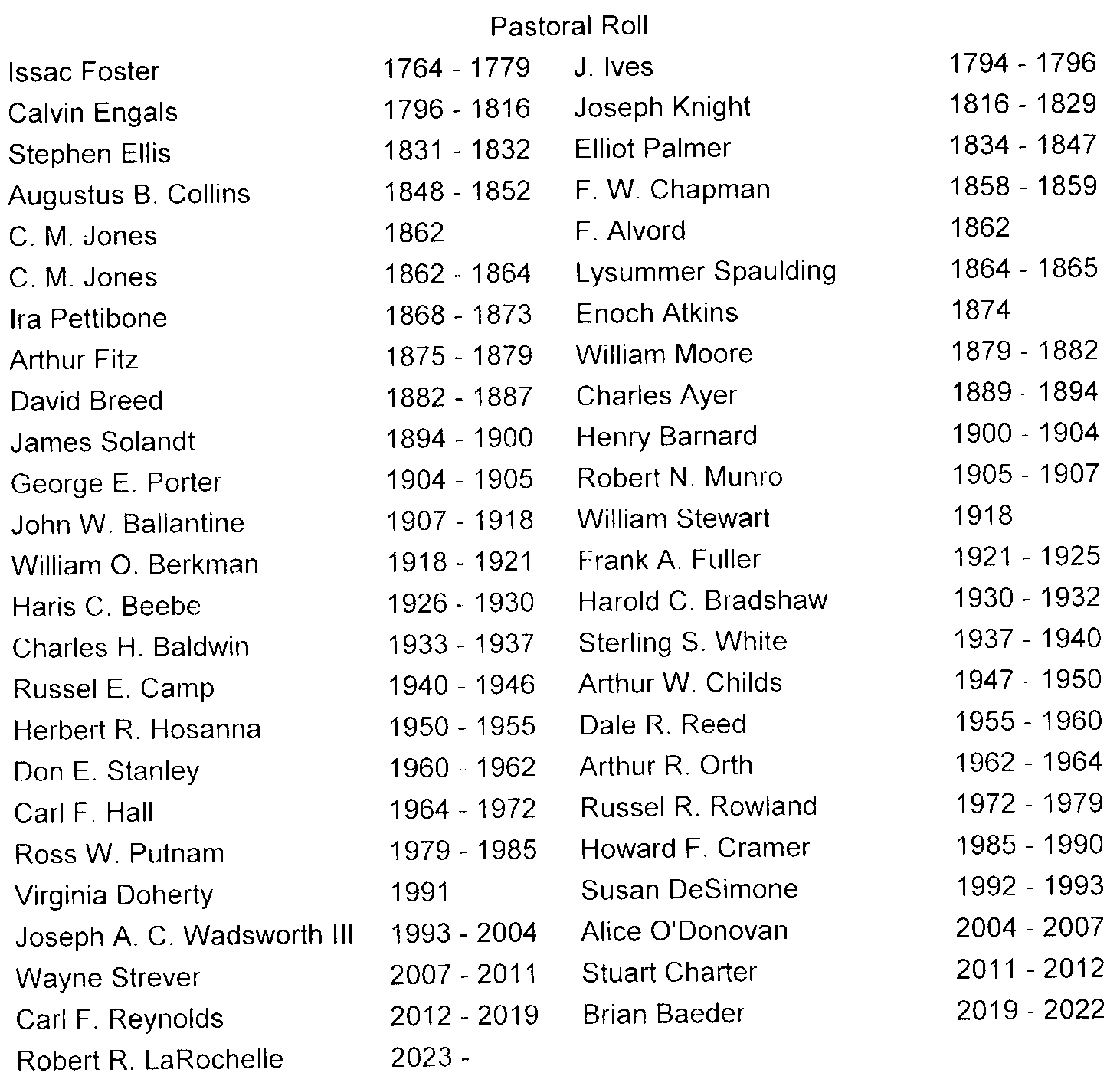 
SECOND CONGREGATIONAL CHURCH OF STAFFORD AT WEST STAFFORD
UNITED CHURCH OF CHRIST
197 West Stafford Road
Stafford Springs, CT 06076
Church Office 860.684.2336
Pastor's Cell Phone:
E-mail: pastor@secondchurchweststaffordct.org |
Our History ...
Worship and work comprised the life of the residents in early West Stafford. However, the people of West Stafford had to travel several miles to worship. The only church at that time was in Stafford's center. Early settlers were required to pay taxes which were used to support the ministry. All households paid their share. Those that lived close to town were able to receive schooling. This was generally the duty of the minister and was seen as a mission of the church since the 1640's. Children living in the outlying areas did not receive much schooling due to the distance and they were needed to help manage the family farm. Many factors caused an unstable religious climate during the period of 1720-mid 1750's. The spread out nature of Stafford, and the requirement to pay taxes for a church family that was too far away to be effective, gave rise to much turmoil. The West Stafford area was just too far for practical attendance at the first church's sunday service in Stafford center. Starting in 1726 there were irregular worship services held in West Stafford, probably in someone's home. Around 1726 the town government was making plans to create a second “Church of the standing order" in West Stafford on approximately 100 acres of land. The original land was located west of Hampden Road's intersection with Tetrault Road.The order of worship in the early 1700's was fairly standardized in West Stafford. The service opened with prayers of Thanksgiving and Intercession to include the needs of the local church and community. This was followed by the singing of a psalms without the muscial instruments. Psalms would be followed by the reading of scripture passages that would be at least a chapter in length. The sermon would follow and this would be followed by questions and comments from the congregation. Another psalm would be sung and this would be followed by the offering. Most likely there were two services on Sunday. One in the morning and one in the afternoon. There was also an additional lecture during the week. The use of a choir came later after the addition of printed music in 1714.
In May, 1765, West Stafford was set off as a separate parish by the Town of Stafford with approval of the assembly. No one knows for sure what the first meetinghouse in the second parish looked like. From similiar constructions throughout the region we can conclude that this building was probably a one floor structure. It probably had a clapboard exterior(not painted) and a wood shingled roof. Shutters were probably used to keep out rain and snow instead of windows because there was such opposition to the tax on glass during this period. The inside walls were single boards nailed into the studs and the seats would have been plank benches without backs. This kept people from falling asleep during the services. There was likely a dug basement underneath that stored the arms and ammunition for the Society's militia. The seats in the meetinghouse faced north and were purchased each year by auction. If you could not afford a pew you would have to stand in the rear of the church or in the aisles or sit on the floor if space was available. In good weather some may have stood outside by the window. Even numbered pews were on the west side of the meeting house and the odd numbered pews were on the east side. In the front of the church was the pulpit with a table for communion in front of it. On either side of the pulpit against the outer walls were benches for the deacons and elders. Pew number 2 was never sold and was saved for the pastor's family. In New England before the revolutionary war, Congregationalism represented about 80% of the faithful.
In the 1830's the second parish house was at a crucial point. The community was growing. The meetinghouse, even though it had been repaired was not adequate anymore. In 1839 a new church was built and dedicated on December 19, 1839. The approximate dimensions of the new church were 25 feet by 50 feet, a little larger than the previous. It has unpainted clapboards until December 1843 when money was given to paint and repair the church. The church had many noble interests at this time, which included freed slaves, destitute seamen, foreign evangelism and seeing that Bibles and literature were widely distributed. It was decided on March 13, 1854 to move the church. The projected cost of this was $2,000 and was a difficult undertaking. The moving of the Second Congregational Church officially began on June 2, 1854 and was moved down Hampden Road to its present location. The parsonage was also moved down the hill and jumped out of the track on the first turn. The house stopped there and it was decided to leave it at that location. It still stands today at the initial, northernmost curve at the base of Hampden Hill Road.

All information taken from The History of the Second Congregational Church of Stafford in West Stafford, Connecticut written by Reverend Joseph A.C. Wadsworth III


